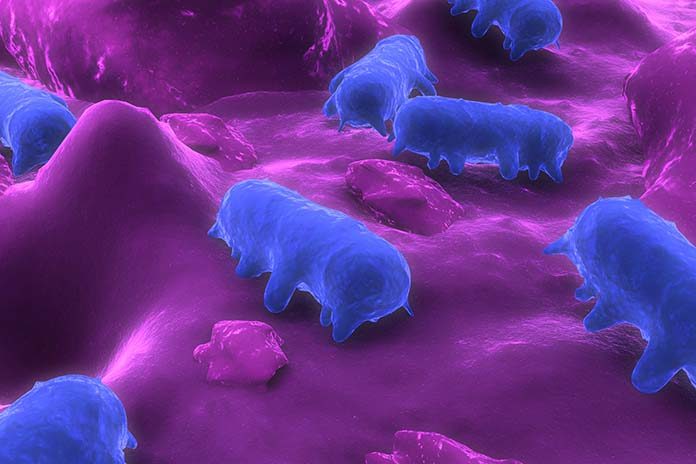
by improving the killing effect of surface decontaminating solutions
In the United States, poultry is the most highly consumed meat and its consumption has grown steadily over the past twenty years. According to the United States Department of Agriculture (USDA) statistics, total poultry (chicken and turkey) consumption (pounds per capita) in the U.S. annually, increased from 93.9 lb (1999) to 101.4 lb (2008) to an estimated 109.7 lb (2018). More importantly, the poultry industry has witnessed changes in consumer preferences from whole birds to chicken parts. For example in 1962, about 83% of broilers were sold as whole birds with15% sold as parts. In contrast, by 2009, 12% of broilers were marketed as whole birds and 42% as parts. To date this trend has continued and will most likely increase as consumers demand for more read-to-cook and easy-to-prepare food products.
The increasing consumer demand for chicken parts has signaled the poultry industry to increase production of those poultry products which require more handling for their preparation. This in turn can increase the risk of cross-contamination with pathogenic microorganisms such as Salmonella enterica and Campylobacter jejuni. Those pathogens are usually carried in the intestinal tract of poultry and are among the leading causes of bacterial foodborne disease and disease burden costs annually in the U.S. For example, the disease burden costs linked to Salmonella and Campylobacter are estimated at $4.4 and $1.5 billion, respectively. Also, the increasing consumption of poultry parts presents a higher risk of food-borne illness to consumers who might mishandle those raw products.
Based on sampling results for USDA, FSIS-regulated products tested during January 1 to December 31, 2018, data on the estimated the percentage of raw chicken parts testing positive for Salmonella and Campylobacter are available. The data indicated that 26.26% of chicken parts (legs, breast and wings) were positive for Campylobacter whereas, other parts (including neck parts) were 53.27% positive for Salmonella. Also, the prevalence of Salmonella on legs, breast and wings was 12.84%. In an earlier report (USDA-FSIS “Raw Chicken Parts Survey”, 2012) the percent positive levels of Salmonella and Campylobacter on raw chicken parts were recorded. Chicken neck parts exhibited the highest extent of contamination (55% positive) for Salmonella and Campylobacter. Chicken breast had the lowest percent positive results (16.1%) for Campylobacter with 13.5% positive for skinless breast and 25.6% positive for breast with skin. As previously stated it is highly likely that chicken parts become further contaminated during the whole carcass dismemberment and deboning processes. In this regard, it is crucial to apply intervention steps that will prevent or minimize the risk of microbial contamination during the production of poultry parts.
Current decontamination practices and limitations
Several poultry processing plants are now using a post-chill intervention step to decrease levels of microbial on raw poultry parts. The use of a parts decontamination tank to decrease bacterial contamination on chicken parts following the cut-up process has become prevalent. In that tank the chicken parts undergo a short exposure time to an antimicrobial solution. Some of the antimicrobial solutions that can be used to achieve decontamination include chlorine (hypochlorous acid), peracetic acid, acidified sodium chlorite, chlorine dioxide, trisodium phosphate, cetylpyridinium chloride, and certain organic acids. To date chemical antimicrobial interventions are only modestly effective in decreasing microbial contamination on raw poultry.
The common issue related to those chemical antimicrobials is that they are all diluted in water to allow application of desired concentrations. Water is a poor wetting agent for fatty surfaces such as poultry skin; therefore, it is challenging for any water-based antimicrobial to adequately wet chicken or turkey skin to fully contact bacteria. In this respect substantial amounts of bacteria can survive attached to fatty surfaces. This problem is further exacerbated when bacteria are located in feather follicles, crevices, folds or in fat smears on the poultry skin. The inaccessibility of pathogens within those areas of skin would also limit the killing effectiveness of water-based sanitizers.
Strategy for improving effectiveness of decontaminating solutions
The antimicrobial effectiveness of water-based decontaminating solutions could potentially be improved by use of surfactants to lower the surface tension between the hydrophilic antimicrobial solution and the hydrophobic poultry skin. Additionally, fat emulsifying ability of surfactants could also expose pathogens to adequate wetting by the antimicrobial solution. Depending on the interactions of poultry skin surfaces with bacteria, surfactants may disrupt such interactions and allow very good contact between the water-based antimicrobial and the target pathogen. Some researchers have demonstrated in broth systems, on frankfurters and on broiler skin, significantly improved antibacterial effect or organic acid solutions in combination with the surfactant such sodium lauryl sulfate (SLS). Other similar enhancements in pathogen inactivation have been reported antimicrobial/surfactant mixtures involving incorporation of Tween 80 compared to use of the specific antimicrobial alone. It is important to ensure cost effectiveness of use of those surfactants before they can be adopted by the poultry industry. Certain saponins produced by some plants also possess surfactant properties and are appropriate natural substitutes for synthetic surfactants. This is important considering the rapidly increasing consumer demand for more natural, environmentally friendly additives for use in foods. Saponin-containing extracts from Yucca schidgera and Quillaja saponaria have FDA GRAS status and are approved for use as an ingredient in food and beverages (Code of Federal Regulations 21CFR 172-510, FEMA numbers 2973 and 3121). Those natural extracts are relatively inexpensive and might be good candidates for use as surfactants to facilitate contact of water-based antimicrobials with poultry skin. There is a crucial need for further research to investigate ways for optimally incorporating surfactants in water-based antimicrobial solutions used for decontaminating raw poultry.
References are available on request.
















